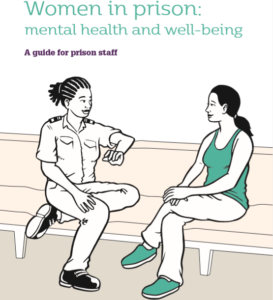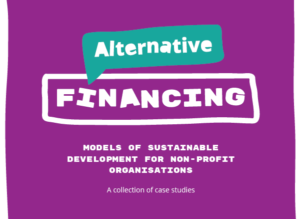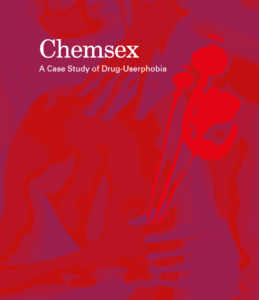Within EU-funded COVID-19 Solidarity Programme for the Eastern Partnership countries AFEW International prepares regular updates on the COVID-19 developments in the region – Armenia, Azerbaijan, Belarus, Georgia, Moldova, and Ukraine. What is the situation today? Please, check it here!
You can find previous updates in the COVID Corner on our website.
As of 22 September 2022
Regional overview
Confirmed daily COVID-19 cases in 2022, between 23 January 2020 and 21 September 2022 in the 6 countries of the Eastern Partnership

Source: Sciences Po Media lab Coronavirus Country Comparator
Situation report Armenia

Image: Worldometer
Cases of COVID-19
— Armenia is reporting that during the week of 12-18 September, 2,142 new cases have been confirmed, which is 9% less than 2 weeks earlier.
— There have been 441,444 infections, 8,679 coronavirus-related deaths, and 428,059 recoveries reported in Armenia since the pandemic began.
Measures to contain the epidemic
— As of May 1, 2022, Armenia has waived the requirement of passengers to present a vaccination document or negative PCR test upon entry. Armenia remains open to foreign visitors by air and land.
— The quarantine regime, which replaced the state of emergency in Armenia in September 2020, had expired on June 20, 2022, thereby annulling all remaining quarantine measures.
— The government of Armenia is reporting on Activities neutralising social consequences of COVID-19, including such beneficiaries as families with children, the unemployed, pregnant women, entrepreneurs and workers in the business sectors hit most by the pandemic, socially deprived families, and students. Beneficiaries can submit proposals to receive financial aid.
Vaccine
— Armenia has administered at 2,150,112 doses of COVID vaccines so far. Assuming every person needs 2 doses, that’s enough to have vaccinated about 33.3 % of the country’s population.
Situation report Azerbaijan

Image: Worldometer
Cases of COVID-19
— Azerbaijan reported 251 new COVID-19 cases on September 21st, a rapid decrease compared to 2 weeks ago.
— There have been 820,098 infections, 9,897 coronavirus-related deaths, and 808,725 recoveries reported in Azerbaijan since the pandemic began.
Measures to contain the epidemic
— On September 20, the Chairman of the Health Committee of the Azerbaijani Parliament Akhliman Amiraslanov announced the parliament will hold hearings in relation to the COVID-19 pandemic to discuss precautionary measures and the situation in the country. Two days later, Azerbaijan’s Minister of Health Teymur Musayev stated that the COVID-19 pandemic is “nearing its end” due to low mortality rates in Azerbaijan. However, he urged citizens to vaccinate.
— The quarantine regime is in place in Azerbaijan until 6:00, 1 November 2022. This entails the requirement of a full COVID-19 vaccination or recovery document for entry to the country and to public services such as malls, hotels, theaters, and restaurants. Since 15 april 2022, PCR tests are not required nor accepted upon entry. Facemasks are recommended, but not required. In addition, borders with neighboring countries are closed, and travelling is only possible by plane.
Vaccine
— Azerbaijan has administered at least 13,857,111 doses of COVID vaccines so far. Assuming every person needs 2 doses, that’s enough to have vaccinated about 48.3% of the country’s population.
Situation report Belarus

Image: Worldometer
— The Minister of Health of Belarus Dmitry Pinevich announced that “there is now a slight increase in the incidence of acute respiratory infections, as well as influenza and coronavirus, but the rate of increase is now half as high as in the fall of 2021”.
— There have been 994,037 infections, 7,118 coronavirus-related deaths, and 985,592 recoveries reported in the country since the pandemic began.
Measures to contain the epidemic
— On April 3rd, Belarus has lifted its covid-related borders restrictions, which were in place since October 2020. Now Belarus citizens can now freely cross the border, while foreign travelers can enter Belarus with a PCR test or vaccination proof. Citizens of Russia and Ukraine are exempted from this requirement due to the geopolitical situation.
— Schools and workplaces have no lockdown measures or recommendations. People are no longer encouraged to stay at home or isolate.
Vaccine
— Belarus has administered at least 15,177,629 doses of COVID vaccines so far. Assuming every person needs 2 doses, that’s enough to have vaccinated about 67.9% of the country’s population.
— Belarus reports that over 6.4 million citizens are fully vaccinated against COVID-19.
— On August 25th, Belarus and Russia agreed to recognize each other’s vaccination certificates. In addition, Belarus and Russia will not apply COVID-19 related restrictions to holders of Belarusian and Russian vaccination certificates and to children and teenagers under 18, who do not have certificates.
Situation report Georgia

Image: Worldometer
— There have been 1,762,206 infections, 16,900 coronavirus-related deaths, and 1,637,293 recoveries reported in the country since the pandemic began.
Measures to contain the epidemic
— Amiran Gamkrelidze, the Head of the National Centre for Disease Control, assures that the “pandemic situation in Georgia is under control” as figures of coronavirus-related deaths have been unchanged for weeks.
— Practically, all the restrictions and regulations have been waived, except for the uniform wearing of masks. Facemasks are mandatory only at healthcare facilities and in public transport. Since May 2, 2022, it is no longer compulsory to wear the facemask at schools or outside.
— A complete report on government measures implemented in Georgia against COVID elaborates on the four stages from preventing to slowing, managing, and adapting to the coronavirus.
— The National Center for Disease Control and Public Health (NCDC) published its 9th report on the progress of COVID-19 in Georgia
Vaccine
— Georgia has administered at least 2,921,949 doses of COVID vaccines so far. Assuming every person needs 2 doses, that’s enough to have vaccinated about 34.3% of the country’s population.
Situation report Republic of Moldova

Image: Worldometer
— Moldova is reporting 3,840 COVID-19 cases between 12-18 September, which is 218 less than the week before.
— There have been 586,966 infections, 11,821 coronavirus-related deaths, and 504,142 recoveries reported in Moldova since the pandemic began.
Measures to contain the epidemic
— Due to rising cases of COVID-19, “code orange” state of emergency has been announced in the capital city of Chisinau on 12 July 2022, and later extended for 60 days until October 8. However, the Minister noted that new COVID-19 measures will not be as severe as those during 2020-2021 due to changing attitudes and rising vaccination rates.
— In July, the National Emergency Commission for Public Health again recommended that Moldovan citizens wear protective masks in public and private medical institutions, public transport, shopping malls, food and non-food stores. It also recommended a physical distance of at least one meter between people, rules of hygiene and a self-isolation regime for infected people.
Vaccine
— Moldova has administered at least 2,229,259 doses of COVID vaccines so far. Assuming every person needs 2 doses, that’s enough to have vaccinated about 40.4% of the country’s population.
— NATO gave Moldova 10,000 express COVID tests and medical equipment worth over 40 million lei.
Situation report Ukraine

Image: Worldometer
COVID-19 cases
— The COVID-19 incidence in Ukraine is rising sharply: in the week of 12-18 September, there have been 36,683 new cases, which is 55% more than three weeks ago.
— There have been 5,096,397 infections, 108,955 coronavirus-related deaths, and 4,904,953 recoveries reported in the country since the pandemic began.
Measures to contain the epidemic
— As previously spoken by the Head of Ukraine’s Ministry of Health Viktor Lyashko about a possible return of quarantine measures, mandatory facemasks are being reinforced in Ternopil. From September 22nd, facemasks will be required in Ternopil’s public transport, shopping malls, stores, catering establishments, cultural and artistic institutions, religious institutions. This is due to a rapid spike in cases in the city. Given the rise of COVID cases in Ukraine, the government is bringing back mandatory facemasks and other measures to contain the epidemic.
— On August 19th, the country-wide quarantine has been extended until 31 December 2022.
— Since March 26, Ukraine has abandoned its quarantine zone system. During the state of war, employees are not obligated to vaccinate.
Vaccine
— Ukraine has administered at least 31,668,577 doses of COVID vaccines so far. Assuming every person needs 2 doses, that’s enough to have vaccinated about 36.5% of the country’s population.
— During wartime, vaccination rates have slowed significantly. Before the war, 250,000 shots were administered in Ukraine daily. Currently, about 250,000 shots are administered per month, and there are about 2,500 vaccination locations in Ukraine.
— To combat this, Ukraine is now allowing second booster vaccinations (previously only one booster was allowed). In addition, Ukraine is encouraging vaccinations for children from the age of 5.
Interesting reads



